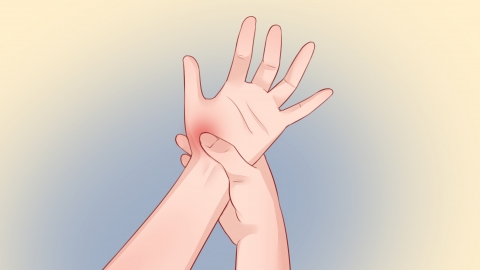What are the symptoms of hand tendon injury?
Under normal circumstances, hand tendon injuries commonly present symptoms such as hand pain, localized swelling, restricted movement, abnormal finger flexion and extension, and tenderness at the injury site. The severity of these symptoms varies depending on the extent of the injury. A detailed analysis is as follows:

1. Hand Pain: After a hand tendon injury, significant pain occurs at the injured site, typically described as sharp or throbbing pain. The pain intensifies during hand movements, pressure, or touch, and may slightly subside with rest. In severe cases, the pain may persist continuously and even interfere with normal hand function and rest.
2. Localized Swelling: Injury can lead to local soft tissue congestion and edema, resulting in swelling. Swelling usually concentrates in the fingers or palm area where the tendon is damaged, and the skin surface may appear slightly red. The degree of swelling generally correlates with the severity of the injury.
3. Restricted Movement: Tendons are responsible for enabling finger flexion and extension. When injured, finger mobility is impaired, manifesting as difficulty forming a fist, inability to fully extend fingers, or sensations of stiffness and effort during movement.
4. Abnormal Finger Flexion and Extension: Some patients may experience abnormalities during finger movement, such as catching sensations, snapping sounds (triggering), or inability to maintain fingers in a specific position after flexing or extending.
5. Localized Tenderness: Pressing on the exact site of tendon injury causes noticeable tenderness, which typically corresponds to the damaged tendon area. Palpation helps initially identify the injury location—tenderness is usually confined in mild injuries but may spread over a larger area in more severe cases.
Patients are advised to avoid excessive hand activity and reduce weight-bearing and repetitive flexion/extension movements of the affected fingers. Proper immobilization and protection of the hand may be beneficial. It is also important to maintain hand hygiene to prevent infection at the injury site. Depending on recovery progress, gentle hand functional exercises under professional guidance can help gradually restore hand function.




